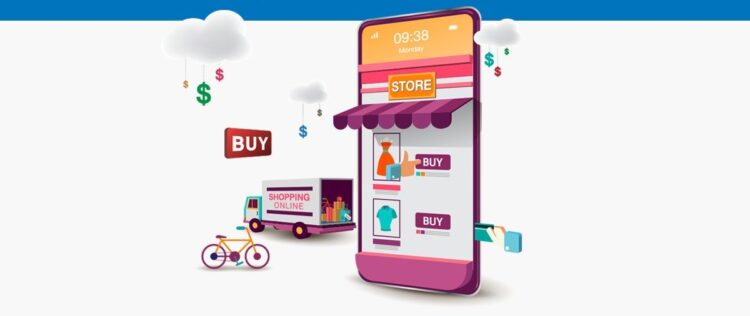Check out the key e-commerce metrics that help measure the success of your business
In any online business, e-commerce metrics are essential to measure the success of a store and foster its development.
Through constant monitoring, it’s possible to gauge the health of the business and define strategies that provide better experiences for customers and, consequently, more sales.
Since it’s simpler online not only to track order and revenue numbers but also the inflow and outflow of customers, there is greater predictability and ease in making quick decisions to improve business performance.
But which e-commerce metrics should you keep an eye on to enhance your strategies? In this article, we explain 6 that are essential in any online commerce. Continue reading to check them out!
6 E-commerce Metrics You Should Monitor
Beyond tracking the number of site visits or total sales, it’s necessary to be aware of all the strategic metrics that indicate whether your business is truly healthy or not.
Below, we’ve selected 6 that are extremely important: Conversion Rate, Revenue, Average Order Value, Cart Abandonment Rate, Customer Acquisition Cost (CAC), and Return On Investment (ROI). Shall we get to know them?
Conversion Rate
The Conversion Rate of an e-commerce is one of the main metrics that should be monitored to measure the success of your business. This is because it indicates how many of the visitors who accessed your site made purchases and became customers.
Many people tend to celebrate when a virtual store’s visit volume is high. However, more important than worrying about attraction is knowing how many of these users placed orders and what can be done to achieve at least a healthy Conversion Rate.
The calculation of this metric, then, is done as follows:
Conversion Rate = (Number of Sales / Number of Visitors) * 100 (%)
But how do you know if the result is suitable for my e-commerce? There are a variety of sectors that sell online, with some businesses generating sales more quickly than others.
Thus, e-commerce Conversion Rates vary according to sectors, and each has a minimum result considered healthy.
According to the e-book “E-commerce Radar,” released by Neoatlas in 2018, an ideal Conversion Rate for a food virtual store, for example, is 4.5%, while for a fashion and accessories store it’s 1.9%.
Therefore, to know what to monitor, it’s necessary to seek results by category and not cling so much to general e-commerce outcomes.
Revenue and Average Order Value
Alongside the number of sales and the Conversion Rate, it’s necessary to monitor the Revenue generated by your business daily.
Through your own e-commerce platform or Google Analytics, it’s possible to know how much you sell in a given period, where these transactions come from (paid media, social networks, or organic search, for example), and the Average Order Value of your business (i.e., the average amount spent by each customer).
This last metric is calculated using the following formula:
Average Order Value = Total Revenue / Number of sales made
Of course, the result will vary according to the products offered by the store. However, having this average in hand, it’s possible to know how many orders are needed to meet the month’s revenue target.
Moreover, you understand which strategies can be adopted to increase this average, especially if your sales include products with very large price variations.
Cart Abandonment Rate
A very common behavior in e-commerce, unfortunately, is cart abandonment. That is, the person chooses the products and almost finalizes the purchase but gives up at the last minute for some reason.
By monitoring this rate and noticing that it’s very high, you can investigate issues that may interfere with the sales process, such as charging a very high freight or payment-related issues.
To calculate this metric, you should use the following formula:
Cart Abandonment = (Number of Completed Purchases / Number of Carts Created – 1) * 100 (%)
To have a basis if your result is good or needs improvement, you can find in the e-book “E-commerce Radar” the average cart abandonment rates by category.
Following the same examples we gave earlier, a food store reaches up to 79% abandonment rate while fashion and accessories reach 83%.
Customer Acquisition Cost (CAC)
Moving a bit further into metrics to understand the health of your business, we suggest that you always also monitor the Customer Acquisition Cost (CAC).
CAC takes into account all marketing and sales resources (investment in paid media, for example) used to attract consumers to the e-commerce and the number of customers acquired.
Thus, we have the following calculation:
CAC = Marketing and Sales Investment ($) / Total Number of Customers
To know if your CAC is low and healthy, just compare it with the Average Order Value. If it’s lower than the average paid by customers, the result is good. But if it’s higher, your e-commerce is incurring losses.
From this, solutions can be sought to reduce marketing and sales investment costs or to increase the Average Order Value.
Return On Investment (ROI)
Finally, it’s also important to monitor the Return On Investment (ROI) of your business and understand how profitable your e-commerce is and what can be improved.
This metric is also more advanced and encompasses not only investments in Marketing and Sales but also the amounts paid to suppliers, employees, training, and all aspects that make the product reach the end consumer.
The calculation can be done as follows:
ROI = Revenue – Costs / Costs
Let’s go to an example:
ROI = 50,000 – 10,000 / 10,000 = 4
This means that you had a return 4 times greater than the initial investment or, if you prefer to track it in percentage, 400% higher. Therefore, the higher the ROI, the better the result obtained with your e-commerce.
If it’s very low, it’s time to review the business costs and seek strategies to increase revenue.
To keep an eye on the metrics that help calculate ROI and other important outcomes, just access them on Google Analytics or on your own e-commerce platform.
Access our Google Analytics Guide right now and learn how to set up the tool to monitor the main e-commerce metrics and all others from your site!





